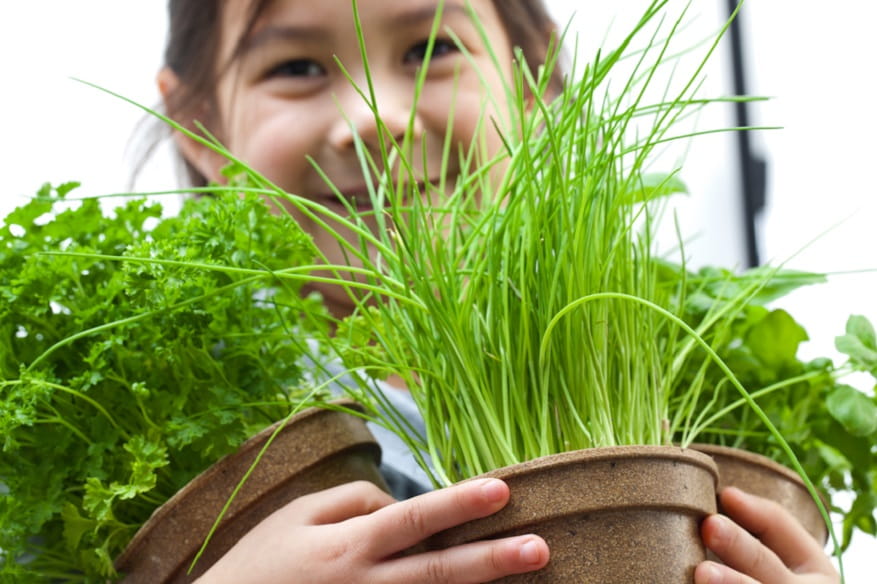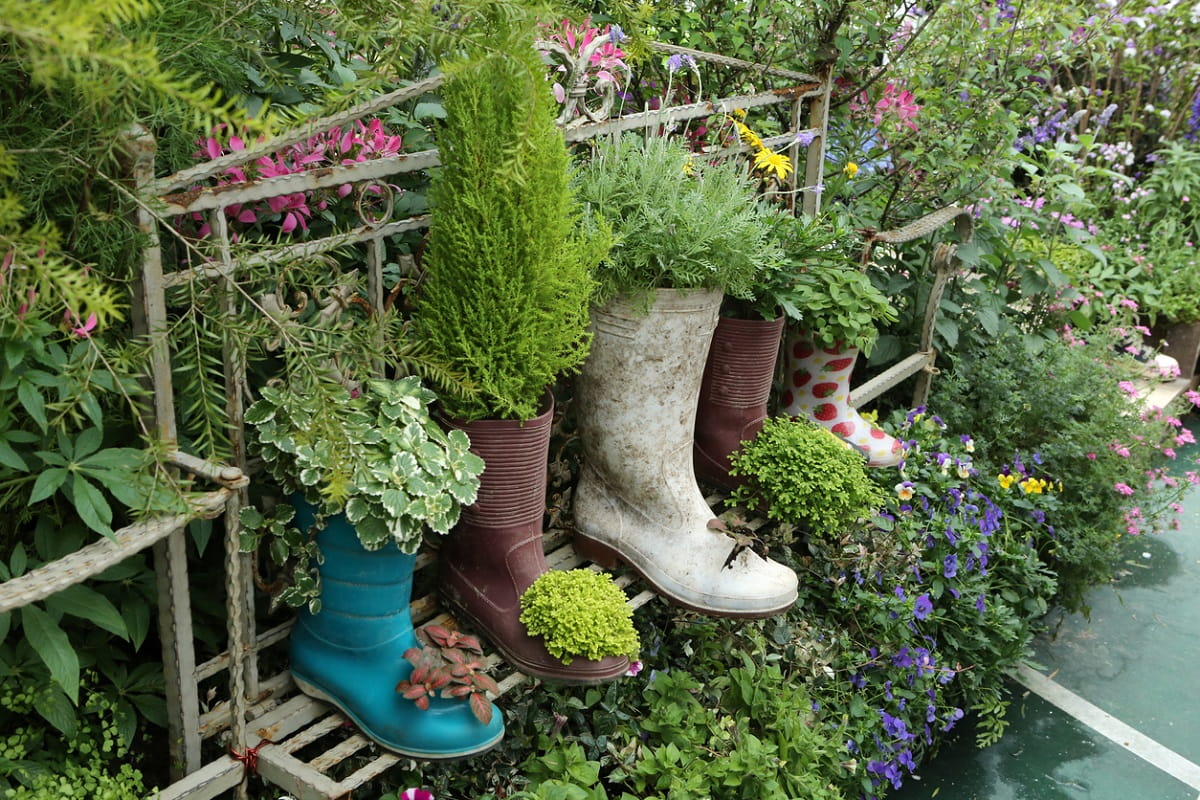Container Gardening: Easy Summer Fun for Little Urban Farm Hands

Love the idea of growing veggies, fruit, and herbs but lacking garden-space? No problem! If you have a small porch, patio, balcony, rooftop, or even a light-filled window, you’ve got a situation that’s ripe for container crops, from crunchy carrots to crisp lettuce, sweet watermelon (yes, really), fragrant basil, and so much more.
Include your kiddo in the planting action and you’ll harvest even more rewards: Research shows that little ones eat more produce, and are more likely to try new varieties, when they get to grow their own. Plus, it’s just plain awesome to scatter tiny radish seeds in a pot of soil, watch the little green leaves sprout, and then pull up the fully-formed crunchy crimson spheres only a few weeks later.
Stock your fridge and watch your budding gardener grow with these three simple steps:
1. Pick Your Produce
Virtually anything that grows in the ground can also be grown in a pot. Great choices for children are those that are easy to plant (lettuce and summer squash), grow quickly (cherry tomatoes and sweet peppers), offer something fun and new (purple carrots!), or something they already like, such as strawberries, cucumbers, and sugar snap peas.
Try Planting a “Pizza Herb Garden”:
Herbs like basil, oregano, pineapple sage, cilantro, thyme, chives, and parsley are especially great for windowsill gardens. Plant a collection of your favorites for a “Pizza Herb Garden.” If your child is old enough, she can snip the herbs herself to sprinkle on your pies—it’s a great way to give that delivery pizza a gourmet lift!

2. Pick Your Containers
Although exact size requirements will vary depending on the plant, a general rule of (green) thumb is “the bigger, the better,” as larger pots allow for more nourishing soil and extra room for a plant’s roots to spread.
Try Planting a “Garden On-the-Go”:
Traditional garden pots made of thick plastic, glazed terra-cotta, or wood are a good go-to because they retain moisture well, but truly, anything (from burlap sacks to birdcages) can be a plant container. To plant a “Garden On-the-Go,” select a container that “goes”—like an old wagon, a tire, a large toy truck, or even shoes! The only “must” is that your container have proper drainage (drilling, cutting, or punching a few holes will likely do the trick).
3. Get Planting
To grow healthy, productive potted produce, you’ll likely need a combo of potting soil and (for grown-up hands only) fertilizer or compost. Getting info about what’s needed for, say, blueberries versus snow peas is as easy as doing a quick Internet search or chatting with the staff at your local garden store. You’ll also want to give your plants as much sunlight as possible (ideally six-plus hours a day), and keep them properly hydrated. A good rule to go by is that the soil should be evenly moist but not soggy—if the top inch of soil is dry to the touch, it’s time to water.
Try Growing Your Own Chocolate Mint!
Fast-growing and hardy with a subtle chocolate scent and vibrant mint flavor, chocolate mint is a great pick for wee garden helpers.
Step 1: Fill a container that’s 8–12 inches in diameter and 10–12 inches deep with potting soil. No fertilizer necessary.
Step 2: Drop in two or three seeds (to ensure at least one takes) and cover with half an inch of loose soil. If you’re using a seedling, plant it at the same depth it was growing in its previous pot.
Step 3: Water thoroughly, and put the container in a window that receives partial to full sunlight each day. Continue to water whenever the top soil is dry to the touch.
Step 4: Pinch off the stems once they’re six to eight inches tall, and you should end up with a bushy, productive plant. Add your harvest to ice water or a fresh fruit salad!





